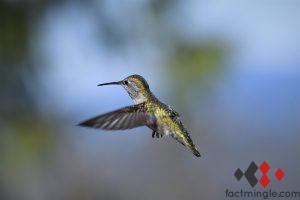Mastering Light and Shadows: Techniques in Photography
Introduction
Photography is all about capturing light and shadows in the most compelling way possible. Mastering the use of light and shadows can transform ordinary images into extraordinary works of art. Whether you are a beginner or a seasoned professional, learning the techniques to harness the power of light and shadows can take your photography skills to the next level.
Understanding Light and Shadows
The Role of Light
Light is the most essential element in photography. It illuminates the subject and creates depth, texture, and mood in a photograph. Understanding the different qualities of light, such as natural light, artificial light, soft light, hard light, and directional light, is crucial in achieving the desired effect in your photographs.
The Impact of Shadows
Shadows are equally important in photography as they can add drama, mystery, and intricacy to an image. The way shadows interact with light can convey emotions and create visual interest in a photograph.
Techniques for Mastering Light and Shadows
1. Use of Natural Light
– Position your subject in relation to the natural light source, such as the sun or window, to create the desired mood and effect.
– Experiment with different times of the day to capture the golden hour or the blue hour for stunning light and shadow patterns.
– Utilize reflectors or diffusers to control and manipulate natural light for a more flattering and balanced look.
2. Use of Artificial Light
– Explore different types of artificial light sources, such as studio lights, speedlights, and continuous lights, to create unique light and shadow combinations.
– Experiment with various lighting setups, including key light, fill light, and backlight, to achieve the desired aesthetic in your photographs.
3. Understanding Exposure
– Master the exposure triangle—aperture, shutter speed, and ISO—to control the amount of light and shadow in your photographs.
– Use exposure compensation to adjust the brightness and darkness of your images according to the desired light and shadow balance.
Conclusion
Mastering light and shadows in photography is a continuous learning process that requires patience, practice, and experimentation. By understanding the interplay between light and shadows, and utilizing various techniques, photographers can elevate their work to new heights and create visually captivating images that evoke emotion and storytelling.
FAQs
Q: What is the golden hour in photography?
A: The golden hour refers to the period of soft, warm, and diffused light that occurs shortly after sunrise or before sunset, making it ideal for capturing stunning light and shadow patterns.
Q: How can I create depth in my photographs using light and shadows?
A: You can create depth by using techniques such as backlighting to create silhouettes, incorporating leading lines and layers, and utilizing the contrast between light and shadow to add dimension to your images.
Q: What are some common mistakes to avoid when working with light and shadows in photography?
A: Common mistakes include overexposure or underexposure of the subject, harsh shadows that distract from the main subject, and not considering the direction and quality of light when composing the photograph.
Q: How can I improve my understanding of light and shadows in photography?
A: To improve your understanding, you can study the work of renowned photographers, take online courses or workshops, practice regularly, and seek feedback from peers and mentors.
Q: What are some creative ways to use shadows as a main element in photography?
A: You can use shadows to create patterns and textures, add a sense of mystery and intrigue, or even use them as a central focal point to evoke emotion and drama in your photographs.
Q: How can I effectively use artificial light sources for portrait photography?
A: Effective use of artificial light sources for portrait photography involves positioning the lights to flatter the subject, using modifiers to control the quality of light, and balancing the ambient light with the artificial light for a natural look.
Q: What is the blue hour in photography and how can I utilize it for capturing light and shadows?
A: The blue hour is the period of soft, cool, and diffused light that occurs shortly before sunrise or after sunset. It provides an opportunity to capture unique light and shadow effects with a bluish tint.
Q: How can I incorporate light painting techniques to enhance the interplay of light and shadows in my photographs?
A: Light painting involves using a handheld light source to selectively illuminate parts of the scene during a long exposure, creating dynamic and visually striking light and shadow patterns.
Q: What are some post-processing tools and techniques that can help enhance the light and shadows in my photographs?
A: Post-processing tools such as Adobe Lightroom and Photoshop offer a range of adjustments, including exposure, contrast, highlights, and shadows, to fine-tune the interplay of light and shadows in your photographs.
Q: How can I use light and shadow to evoke specific emotions in my photography?
A: By understanding the psychological impact of light and shadow, you can use them to evoke emotions such as joy, melancholy, mystery, drama, and tranquility in your photographs.




